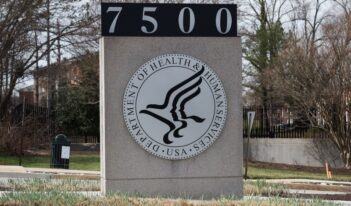
Scholar argues for tele-prescription reforms that can increase patient access to necessary controlled substances.
The U.S. Drug Enforcement Administration (DEA) and the U.S. Department of Health and Human Services (HHS) recently issued a rule extending—for the third time—COVID-19 pandemic-era flexibilities for prescribing controlled substances through telemedicine. The rule allows health care providers to continue prescribing controlled substances through a virtual consultation without first conducting an in-person evaluation of the patient.
In a recent article, Benjamin Barsky of the University of California College of the Law, San Francisco contends that federal measures for regulating controlled substances cannot maximize patient access to opioid addiction treatments unless they shield prescribing physicians from “state tele-prescribing restrictions.”
The prescription of controlled substances is governed by the 1971 Controlled Substances Act. Barsky explains that by the mid-2000s, individuals could access prescription drugs, including drugs regulated by the Act, with just “a computer, a credit card, and access to the internet.”
Barsky recounts that the “expanded online medical marketplace” for prescription drug purchases, coupled with multiple reported cases of overdoses caused by prescription opioids purchased online, led Congress to amend the Controlled Substances Act in the Ryan Haight Online Pharmacy Consumer Protection Act of 2008.
The Ryan Haight Act requires physicians to conduct an in-person evaluation of a patient before they can prescribe controlled substances, such as opioid addiction medications, through telemedicine. Prescribers who violate the Act are subject to up to 15 years in prison and fines of up to $5 million.
Barsky describes access to opioid addiction medication as “abysmal.” He notes that individuals who live in rural or medically underserved communities, who are disabled, and who are lacking transportation to medical care facilities are particularly affected by inaccessibility.
Telemedicine should have been “the great equalizer” and a promising solution to increase access to opioid addiction medication, Barsky argues, but the Ryan Haight Act “stymied progress” because of its in-person visit requirement.
Although the DEA waived in-person consultation requirements during the pandemic to reduce the risk of transmitting disease in health care facilities, Barsky contends that this measure did not preempt states imposing such requirements. He explains that eight states chose to parallel the requirements and punishments of the Ryan Haight Act, while the other 42 states chose to align their regulations with the DEA’s position.
Barsky points out that patients living in states that passed measures to mimic the Ryan Haight Act were 22 percent less likely to receive medications through telemedicine when starting treatment compared to individuals living in states without in-person restrictions.
Through a quantitative analysis of the effects of the Ryan Haight Act and state policies enacted in response to the DEA’s waiver of the in-person requirement, Barsky assesses the “tension” between federal controlled substances laws and state efforts to regulate and deliver treatment.
He concludes that, at least for some restrictive states, the interest in “curbing controlled substance misuse” outweighs the need to respond to the demand for opioid addiction medications. Barsky adds that in favor of this interest, states may oppose federal moves to expand tele-prescribing in the future.
To bypass the Ryan Haight Act’s limitations and restrictive state policies, Barsky argues that solutions should “enable clinicians to deliver care, even when doing so is prohibited under state law.” For example, Barsky contends that clinicians should be allowed to initiate opioid addiction treatment for patients through telemedicine, regardless of whether the practice is prohibited in the states either reside in.
Barsky proposes that the DEA establish a “special registration pathway” that would allow physicians to prescribe opioid addiction medication without an in-person consult even if state law would prohibit the practice. Barsky advocates using the SUPPORT for Patients and Communities Act of 2018, in which Congress required the DEA to issue regulations detailing the procedure for obtaining a special registration and when special registration could be granted for a physician to tele-prescribe controlled substances.
The DEA should have issued such regulations within one year of the Act’s enactment, Barsky states, but it has yet to do so. Barsky recommends that, using its authority under the Act, the DEA issue regulations to implement the special registration pathway and shield participating physicians from state-level restrictions.
Noting the concern that the DEA may not have authority to use a special registration pathway to shield providers from state law, Barsky concludes that this worry is “misplaced.” He contends that “an agency regulation with the force of law can preempt conflicting state requirements.”
Future measures used to expand access to opioid addiction medication must consider the possibility that corresponding state-level restrictions may impede federal efforts, Barsky concludes. He emphasizes that if the mechanisms used to deliver health care are to evolve with the rise of telemedicine, then regulations must follow suit to address the ongoing opioid crisis.



